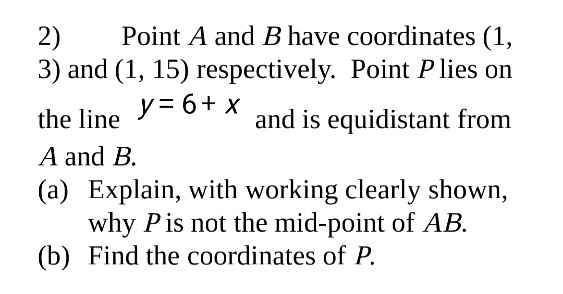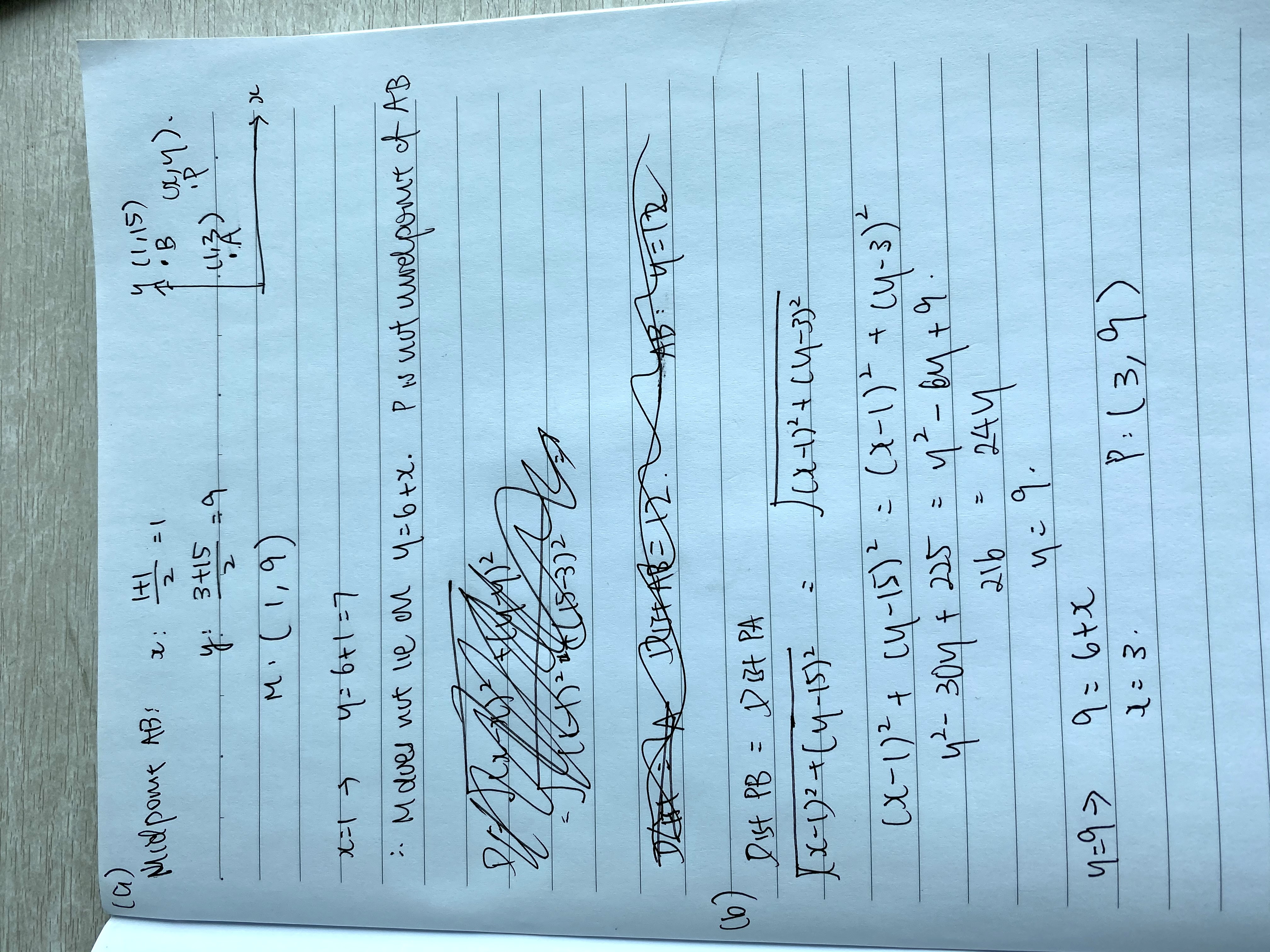Ask Singapore Homework?
Upload a photo of a Singapore homework and someone will email you the solution for free.

Question
secondary 3 | A Maths
One Answer Below
Anyone can contribute an answer, even non-tutors.

Need help please
= (average of x, average of y)
= (1, 9)
Sub into the equation y = 6 + x,
LHS = 9
RHS = 6 + 1 = 7
which is a clear mismatch. So, (1, 9) does not exist on the line. Hence, P is NOT the midpoint of AB.
Let P be (x, y).
Length of AP
= sqrt [(xP - xA)² + (yP - yA)²]
= sqrt [(x - 1)² + (y - 3)²]
Length of BP
= sqrt [(xP - xB)² + (yP - yB)²]
= sqrt [(x - 1)² + (y - 15)²]
Since P is equidistant from A and B, this means that lengths AP and BP are equal.
sqrt [(x - 1)² + (y - 3)²] = = sqrt [(x - 1)² + (y - 15)²]
Removing square roots,
(x - 1)² + (y - 3)² = (x - 1)² + (y - 15)²
Cancelling both (x - 1)²,
(y - 3)² = (y - 15)²
Expanding,
y² - 3y - 3y + 9 = y² - 15y - 15y + 225
y² - 6y + 9 = y² - 30y + 225
-6y + 9 = -30y + 225
30y - 6y = 225 - 9
24y = 216
y = 9
Since P lies on the line y = 6 + x,
9 = 6 + x
x = 3
So, P is (3, 9).
In fact, any point along the horizontal line y = 9 is equidistant from A and B (where this horizontal line is like the "mirror" to both (1, 3) and (1, 15)). But only (3, 9) also lies on the line y = 6 + x.
See 1 Answer





